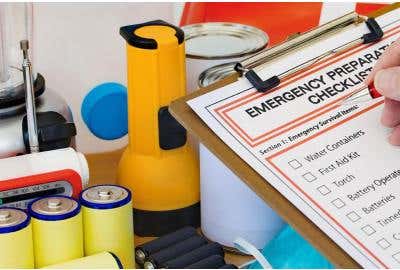From Hurricane Matthew To Emergency Preparedness: A 3-Step Guide


The southeastern coast was hit hard by Hurricane Matthew this weekend, leaving trail of devastation with at least 21 dead (reported on Monday morning), thousands of people stranded and millions without power. While Hurricane Matthew has weakened and is now labeled post-tropical cyclone, people are left with destruction and tasked with major recovery efforts. According to a National Safety Council poll, one third of U.S workers do not feel well trained in emergency practices while 75 percent of managers and supervisors say their employees are well trained to handle an emergency. To bridge the current gap in perception, safety leaders should take this time to re-assess and improve their current level of emergency preparedness.
Here are three steps to increase emergency preparedness for your employees.
1. Develop an Emergency Action Plan
An emergency action plan (EAP) is a written document required by particular OSHA standards 29 CFR 1910.38(a). Developing an EAP starts with understanding the risks when severe weather occurs and its impact on your business to best minimize hazards and risks. Develop an evacuation plan that clearly specifies conditions that would trigger the plan, emergency functions, chain of command, specific evacuation routes, equipment and procedures for all involved personnel, including your employees, customers and visitors. Are your emergency response team members thoroughly trained to handle any possible crises? Also, make sure your workplace complies with OSHA’s emergency standards.
2. Communicate the EAP to Every Employee
You’ve got a plan, great! The next step is to make sure that it will be implemented the way it’s designed to be. To achieve that, all your employees (not just emergency and disaster management personnel), must understand types of potential emergencies, special hazards, how to report emergencies, and details of the EAP. Beyond that, better equip your employees with helpful knowledge and skills during an emergency such as First Aid training and CPR training. Lastly, conduct regular employee perception surveys to understand their level of emergency preparedness to avoid the perception gap between employers and employees mentioned above.
3. Maintain and Evaluate your EAP
Once the plan is developed, maintain and evaluate your plan by conducting routine exercises with your employees is crucial. If implementation fails during testing, follow-up investigation and corrective edits of the current EAP can better prepare the organization for real emergencies. Gather feedback from all levels of employees, and provide ongoing and effective training to support success of the program. Thoroughly evaluate your EAP at least annually.

